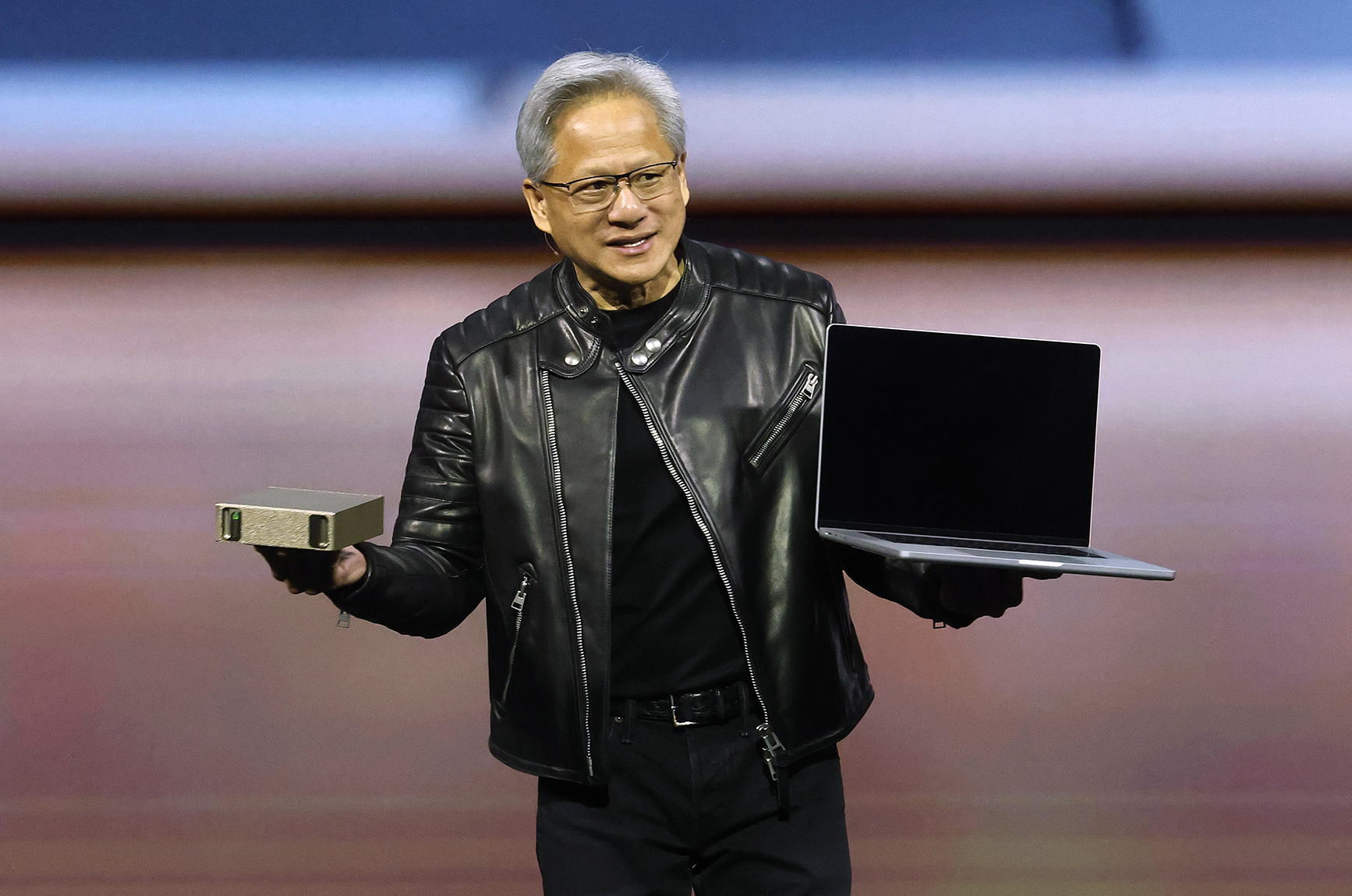You’d have to go back to June 2024 for the last time Nvidia shares traded at current levels. Those were the heady days of Big Tech CEOs trying to court AI talent by boasting about their H100 – the reigning apex predator of data centre GPUs (graphics processing units) – stockpiles, until Chinese firm DeepSeek spoiled the party and showed that you didn’t need all that expensive hardware to make computers seem intelligent.
Now that the market is retreating from a bullish Nvidia-centred AI hardware position, the company needs a champion.
Enter Nvidia founder and CEO Jensen Huang stage left with new shiny AI chips and next-level lingo to put some jive back in the AI groove.
At Nvidia’s recent GTC conference, Huang introduced the concept of an “AI factory” powered by “tokens” – what he calls “the building blocks of AI”.
“AI has now come back to revolutionise computer graphics,” Huang told the audience, explaining how AI has changed computing from retrieving information to generating it.
“This is how intelligence is made: a new kind of factory generator of tokens, the building blocks of AI,” he declared, speaking without a script.
As Huang put it, “AI has now come back to revolutionise computer graphics” and fundamentally changed computing from a retrieval model to a generative one, where AI “understands the context, understands what we’re asking, understands the meaning of our request and generates what it knows”.
New hardware promises
To support this vision, Nvidia unveiled its Blackwell platform, which Huang claims is “in full production, delivering 40x the performance of Hopper (H100)”.
He boldly predicted that “when Blackwell starts shipping in volume, you couldn’t give Hoppers away”, suggesting a massive leap in capabilities.
Huang further outlined an “annual rhythm for the buildout of AI infrastructure”, teasing future advancements like Blackwell Ultra and the Vera Rubin architecture, designed to dramatically enhance performance and efficiency in AI data centres while propping up Nvidia’s evaporating order book.
South African firms will likely first encounter these “AI factories” through Nvidia’s partnership with Dell Technologies.
Michael Dell affirmed the company’s commitment to “simplifying AI for the enterprise” with “seamless Nvidia hardware and software from desktop to data centre”.
Huang added that “Nvidia and Dell are partnering to deliver the industry’s broadest, end-to-end AI infrastructure, giving enterprises everything they need to develop, deploy and scale AI”.
Traditional computing still matters
Despite AI’s dominance, traditional computing remains crucial.
Sarah Schafer of UCT’s Advanced Computing Research Unit – which runs on a Dell-built high-performance computer (HPC) – explained to Daily Maverick: “Within the context of a university, HPC servers are still highly relevant in the age of AI data centres. Increasingly, instead of competing, HPC facilities and AI data centres converge.
“The compute power that an HPC offers has a different focus to AI workloads, and scientific fields that require large-scale data analysis like bioinformatics, engineering, astrophysics and climate modelling still require traditional HPC clusters for simulations.”
What this means for you
The language of computing is changing – it’s no longer just about processing power but about generating “tokens of intelligence” efficiently.
For companies in emerging markets, staying competitive will require understanding not just new technology but new ways of thinking about computing in this “AI factory” age.
That understanding will dictate hardware investment decisions and steer AI policymaking to incorporate not only what is coming from Big Tech and flowing through the colocations, but also consider locally built solutions running on Chinese or Gulf models. The bottom line is that tech is about to get more intuitive. DM





